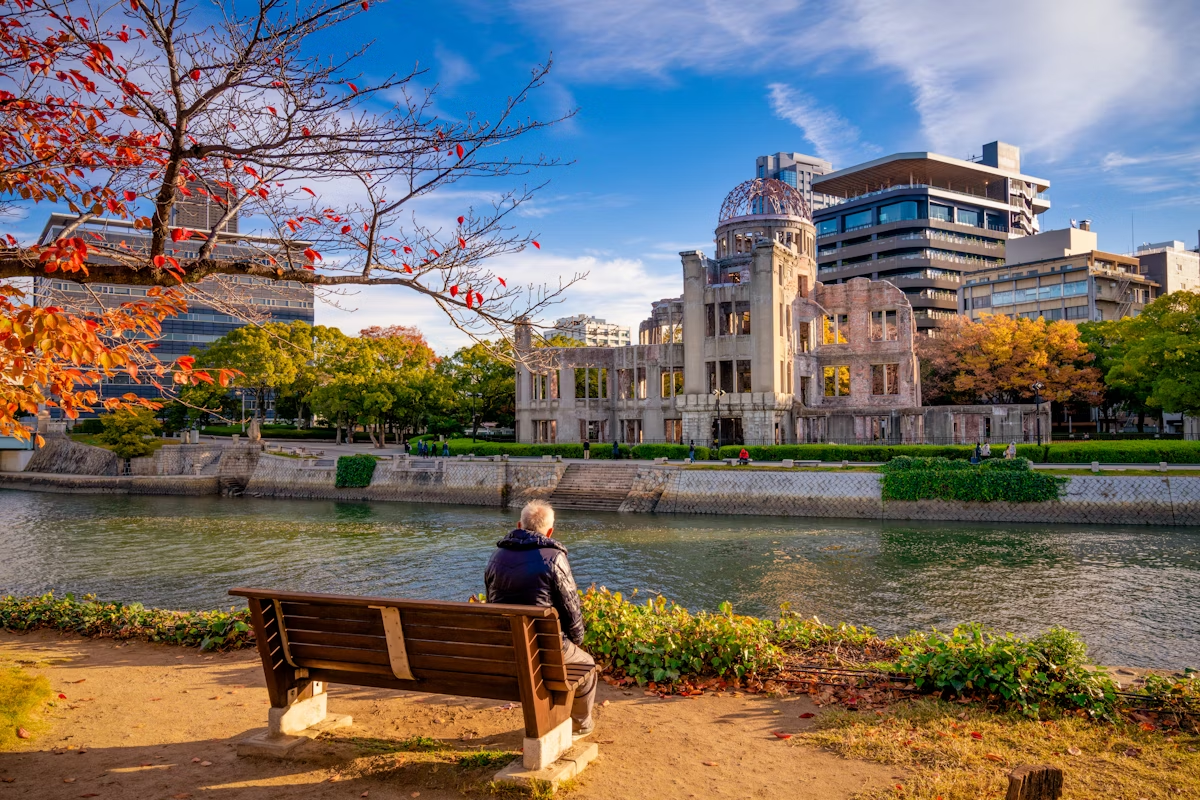Hiroshima is the largest city in western Japan and a vibrant hub of culture, history, and modern amenities.
It’s situated in the southwestern part of Honshu island within the Chugoku region of Japan. Hiroshima has a population of around 2 million people and lies at an elevation of 8.5 meters above sea level.
Hiroshima and the Atomic Bomb:
The area suffered heavy bombing during World War II after it was chosen as the primary target for atomic bombs due to its strategic importance in terms of military production and transportation networks.
After being destroyed by an atomic bomb on August 6, 1945, Hiroshima became known as one of the most powerful symbols of peace in the world, with its famous “Peace Memorial Park” dedicated to those who lost their lives in the attack.
The area has since been rebuilt and now serves as a popular tourist destination, boasting many cultural attractions such as museums, temples, shrines, gardens, restaurants and more!
Fun Facts:
- Hiroshima was founded in 1589 by Mori Terumoto and served as the capital of Aki Province from 1619-1868 before becoming a major port city during the Meiji period.
- It’s well-known for its delicious oysters, which are harvested from neighboring bays throughout the year – particularly during winter months when they reach their peak flavor!
Attractions:
Here are a few places you won’t want to miss on a visit to Hiroshima.
- Mizukake Fudo: Mizukake Fudo, also known as “water pouring Buddha,” is located on Mount Kannon and stands atop two pillars that were built in 1264 AD. It is said to bring good luck if water is poured onto it with bamboo scoops or by hand. It has since become a popular pilgrimage site for both locals and tourists looking for spiritual guidance or protection. It has become so significant for its soothing atmosphere and powerful ritualistic practices that it often serves as the central feature of many festivals in the region.
- Genbaku Dome: Genbaku Dome was formerly known as Hiroshima Prefecture’s Industrial Promotion Hall prior to August 6, 1945, when it was destroyed by an atomic bomb explosion. Although heavily damaged, it still stands strong today, serving as an iconic reminder of past events and acting as a hito (which means “peace symbol”) amongst all other landmarks scattered throughout the city streets. The dome is home to many memorials dedicated to those affected by war, such as the Atomic Bomb Monument, which can be found at the center of the site.
- Heiwa Kinen Park: Heiwa Kinen Park was constructed close to where the impact zone once was and features lush greenery surrounded by various monuments dedicated to those affected by war. The park is also home to several statues of elephants made from metal recovered after being melted down during the atomic explosion, standing as a reminder of resilience in times of tragedy. Another monument here commemorates Sadako Sasaki, a young Japanese girl who survived for two years after falling ill due to radiation exposure. Tragically, she passed away at the age of 12.







What do you think?
Show comments / Leave a comment